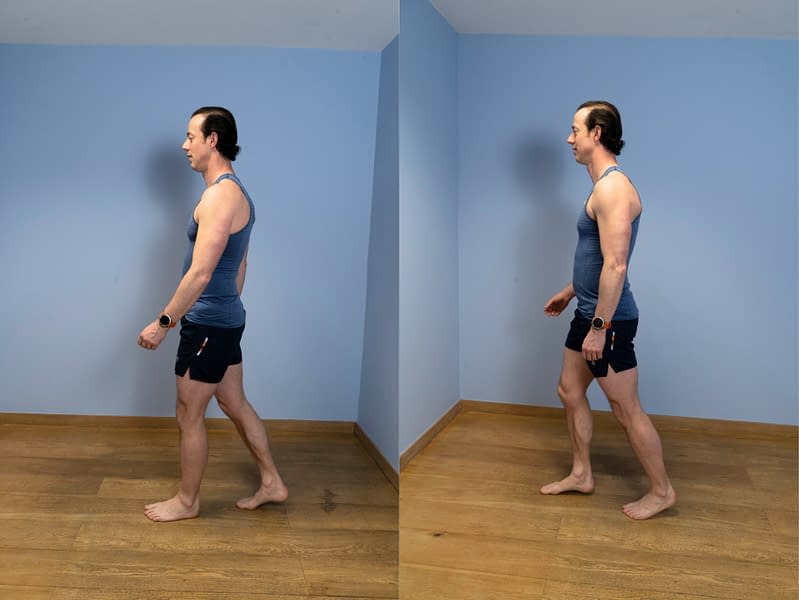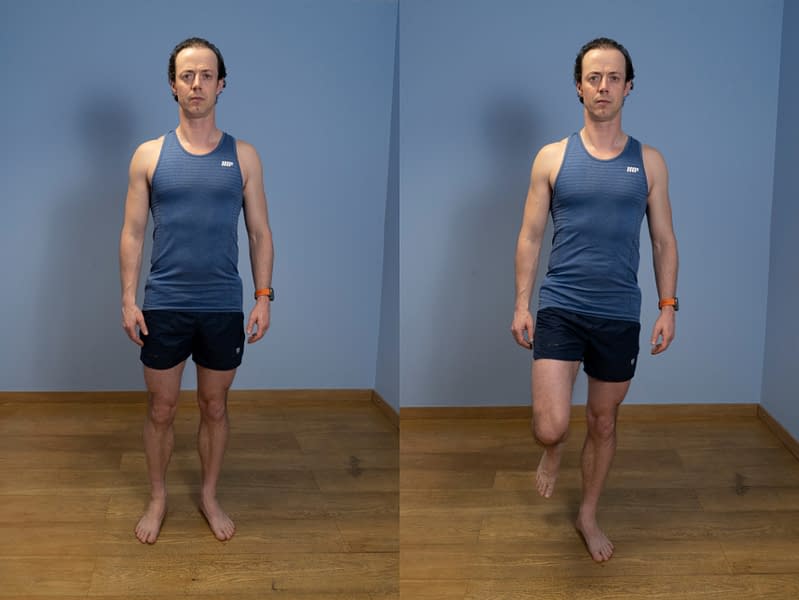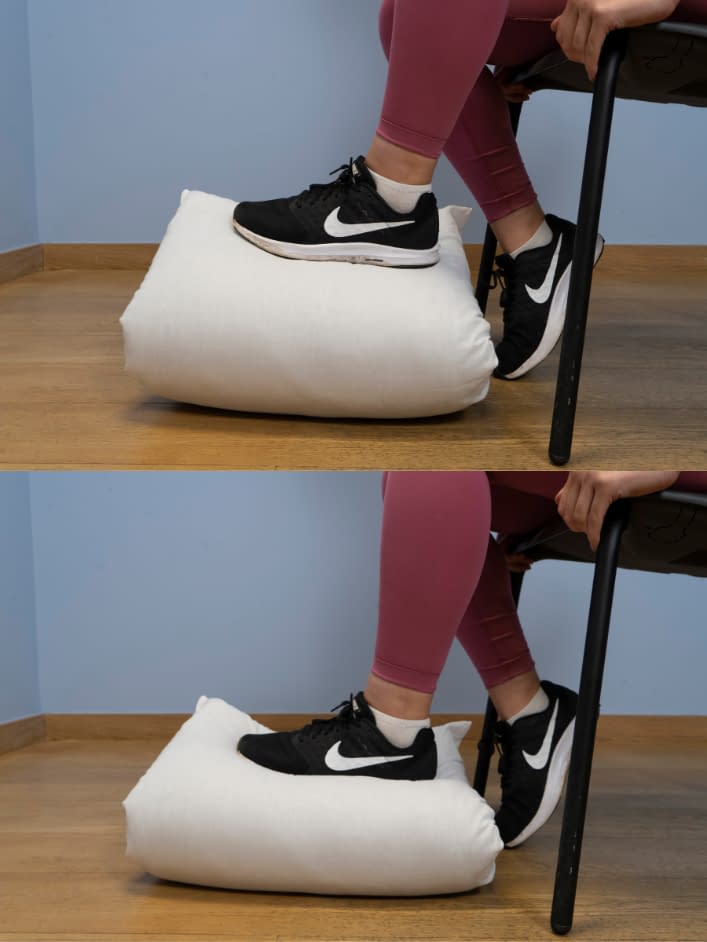Proximal Hamstring Tendinopathy Early Exercise Programme
Aim to perform this programme a minimum of once per day unless prescribed otherwise. As with any new exercise, start slowly (repetitions as able) and build up as you are able within the guidelines below.
Pain should not exceed 5/10 whilst completing this exercise programme.
1. Brisk walk
- Start by taking short walks everyday just to get out in the fresh air and into nature if you can.
- Walk at a speed that raises your heart rate but leaves you able to have a conversation.
- Walking with a friend or partner is great.
2. Single leg balance – knee straight
- Perform this exercise barefoot or in socks in a clear space near a wall/stable object and on a flat, non-slip surface.
- Shift your weight on to the affected leg then lift the supporting leg slightly off the floor – keep the knee straight.
- Look down at the knee and focus on balancing whilst keeping the knee in line with the hip and ankle – use the object/wall to prevent yourself falling.
- To progress, try looking straight ahead rather than down at the knee. To advance further, this can be performed with the eyes closed.
3. Isometric pillow press
- Sit in a firm, stable chair and place a pillow on the floor under the foot of the targeted leg.
- Push the foot down in to the pillow using the thigh and buttock muscles.
- Hold the squeeze at around 70% of your maximum effort, pain should remain at or below 5/10 on your pain scale.
We recommend consulting a musculoskeletal physiotherapist to ensure exercises are best suited to your recovery. If you are carrying out an exercise regime without consulting a healthcare professional, you do so at your own risk. If you have any concerns whilst completing these exercises, please contact a healthcare professional.
More Plans
Once your pain has settled to more manageable levels, you can progress to more challenging exercises that strengthen your hamstring muscles in different ranges of movement. The aim of this intermediate stage of the rehabilitation programme is to restore hamstring muscle strength and capacity in a functional range of movement. Pain during these exercises is safe and acceptable If your pain is above 5 during these exercises, you may need to reduce the amount of resistance you are using or decrease the number of repetitions you perform until the pain settles again. This should not exceed any more than 5/10 on your perceived pain scale.
- 0
- 1
- 2
- 3
- 4
- 5
- 6
- 7
- 8
- 910
The goal of the advanced rehabilitation plan is to continue to build further hamstring strength but in positions that place greater functional strain on the hamstring. The exercises you complete here are similar to the intermediate programme, but aim to challenge your hamstring muscles through a larger range of movement, with more repetitions or increased amounts of resistance. Single leg exercises are important to address any differences in strength between your painful and non-painful side. Exercises that encourage your muscles to work for faster, shorter spells of exercise (sometimes known as plyometrics) can help prepare you for a return to sport or running. This should not exceed any more than 5/10 on your perceived pain scale.
- 0
- 1
- 2
- 3
- 4
- 5
- 6
- 7
- 8
- 910


